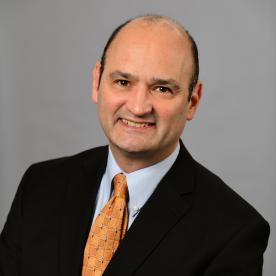
While the world welcomes 2022, the Canadian Intellectual Property Office (CIPO) is processing trademark applications filed in 2019. However, CIPO appears to have a plan to reduce the significant backlog of Canadian trademark applications awaiting first examination.
Over the past couple of years, the backlog of Canadian trademark applications awaiting first examination continued to grow, from 24 months to almost 36 months. While some of the issues could be blamed on the pandemic, many could not.
As of today, there are a handful of Canadian trademark applications from very late 2018 which are still awaiting first examination. However, CIPO is now starting to examine trademark applications filed in 2019 in earnest. CIPO has publicly stated that it is taking specific steps to address the backlog. Significantly, CIPO has announced and appears to be implementing a plan to examine trademark applications based on into what category the applications fall.
First priority goes to applications for which a request for expedited examination has been approved. The criteria for expedited examination, which include the application falling within specified circumstances, and being supported by an affidavit supporting that the application meets one or more of such criteria. If an application is approved for expedited examination, our experience has been that CIPO will examine such applications in as little as a week or two.
Second, Canadian trademark applications filed pursuant to the Madrid Protocol are examined in the order in which they were filed in Canada. Such applications have been filed in Canada since June 2019, and CIPO appears to have largely examined all such applications filed in 2019 and the first half of 2020. The target is for CIPO to examine so-called Madrid applications within 18 months. CIPO appears to be meeting that target. Canadian Madrid applications are being examined on the order of approximately 16-17 months from filing in Canada.
Third, for all other Canadian trademark applications (non-Madrid or regular applications), CIPO is giving priority to applications covering goods and services from a pre-approved list of goods and services (the so-called “picklist”). Canadian trademark applications using the picklist are being examined at a rate of approximately three times the rate of applications which don’t describe the goods and services using exclusively the picklist. The backlog for examining picklist applications is currently approximately 26 months, with CIPO currently examining such applications filed in the last quarter of 2019.
Fourth, the lowest priority goes to regular, non-Madrid applications filed which don’t use the picklist to describe the goods and services. The backlog for first examination of such applications, which make up the majority of applications filed, is still on the order of 36 months, with CIPO only now starting to examine such applications.
The discrepancy in examination time between picklist and regular applications will likely continue to grow so long as CIPO emphasizes the examination of picklist applications over other ones. It is possible to amend an application from a regular one to a picklist one, if the goods and services can otherwise be described in picklist terms. CIPO is also open to requests to add terms to the picklist, and has expressed the wish that the picklist increase in size, and also be consistent with descriptions of goods and services used in other countries. Thus, while further cost may be involved, for Canadian applications filed in 2019 and awaiting first examination, quicker examination may be achieved by filing an amended application which complies with the picklist.
There are other signs that allow for a certain amount of guarded optimism. First, CIPO continues to say that it intends to increase the number of Examiners, from the current approximately 75 to 100. Once new Examiners are hired and trained, the rate of examination could be expected to increase by upwards of a third.
As well, Canadian trademark applications filed before June 17, 2019 did not have to be grouped into classes of goods and services. Once CIPO will have cleared the backlog of applications filed in approximately the first half of 2019, the number of applications CIPO examines which generate an Examiner’s report regarding classification of goods and services should decrease markedly.
If and as the picklist grows, the number of objections based on descriptions of goods and services should also decrease, with a commensurate increase in the speed of examination.
CIPO has indicated that, as of the end of November 2021, there were over 180,000 Canadian trademark applications awaiting first examination. CIPO has said that it hopes to clear the backlog of applications awaiting first examination by the end of 2022, although CIPO has not indicated what time to first examination it hopes to have by then.
There still remain backlogs at CIPO which extend beyond first examination. The backlog for hearings in summary cancellation (s. 45) proceedings is currently on the order of 24 months when a hearing is requested. For oppositions where a hearing is requested, the backlog is 16-20 months.
For now at least, CIPO has largely turned the examination calendar to 2019 and appears to be making an effort to reduce the backlogs. Time will tell how successful its efforts are.
Summary By: Gary Daniel
E-TIPS® ISSUE
Disclaimer: This Newsletter is intended to provide readers with general information on legal developments in the areas of e-commerce, information technology and intellectual property. It is not intended to be a complete statement of the law, nor is it intended to provide legal advice. No person should act or rely upon the information contained in this newsletter without seeking legal advice.
E-TIPS is a registered trade-mark of Deeth Williams Wall LLP.
